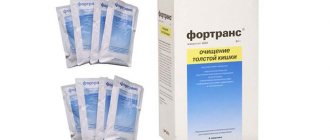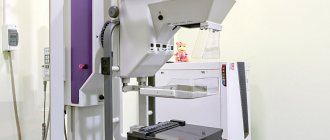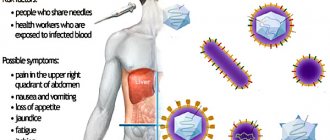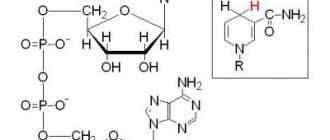A peak flow meter is a simple device necessary for individual monitoring of the course of bronchial asthma. A peak flow meter is also necessary for an asthmatic, just as a blood pressure monitor is needed for a hypertensive patient, or a glucometer is needed for a diabetic.
With bronchial obstruction that accompanies this disease, the exhalation phase primarily suffers in the act of breathing. Peak flowmetry allows you to quantify how great the degree of bronchial obstruction is by measuring peak expiratory flow (PEF). This important indicator is necessary to monitor the dynamics of the course of bronchial asthma, determine the effectiveness and carry out correction of the therapy received. A decrease in peak expiratory flow rates, even in the absence of noticeable subjective symptoms, will notify the asthmatic in advance of an approaching exacerbation of the disease and will allow appropriate measures to be taken in advance.
Peak flow meters are available mechanical and electronic; they are convenient and easy to use. Due to their low cost, mechanical peak flow meters are more often used, the error of which is insignificant in comparison with electronic models. Peak flowmetry is carried out twice a day (morning and evening), daily. In this case, measurement is possible no earlier than 3 hours after using the inhalers. The results are recorded in the observation log.
Why is the research being conducted?
Bronchial asthma and chronic obstructive pulmonary disease require constant monitoring. With the help of peak flowmetry, you can monitor yourself without visiting a clinic. If respiratory function is impaired, the patient will be able to independently change the dose of medications.
Peak expiratory flow allows you to assess the functioning of the bronchi and timely notice the narrowing of their lumen. The larger it is, the easier it is for air to penetrate the bronchi. Goals for performing peak flow measurements:
- identification of a tendency to asthma, including occupational asthma,
- determining the reversibility of respiratory tract obstruction,
- identifying the degree of bronchial disorder,
- selection and adjustment of medication dosage,
- establishing the causes of bronchospasms: manipulation is carried out after the influence of provoking factors, for example, dust, pollen, chemicals.
Advantages of diagnostics using the PSV method
A peak flow meter is a diagnostic tool used to monitor lung function. It measures the rate at which air is expelled from the lungs. When several measurements are taken over several weeks or months, it can be determined whether the lungs are stable or deteriorating.
Using a peak flow meter for moderate to severe asthma is an important part of treatment. You should monitor your respiratory system daily for changes and tell your doctor if your airways become narrowed.
Regular use of a peak flow meter can help control asthma by detecting narrowing of the airways before symptoms characteristic of the disease appear. This allows time to adjust medications or take other therapeutic measures before symptoms worsen.
Peak flowmetry (the algorithm for adults and children is the same) is performed for children with suspected asthma, starting from 5 years of age.
What is the device and types of peak flow meters
A peak flow meter is a device for assessing the condition of the bronchi. It is a small tube that fits easily in your hand. The device has a scale divided into three zones: red, yellow and green. The simplicity of the tool allows the patient to determine his condition without a doctor.
The appearance, price and measurement accuracy of peak flow meters from different manufacturers may vary. And therefore you need to use one device. Fluctuations in the readings of different peak flow meters reach up to 15%, which can make it difficult to assess the patient’s condition.
Peak flow meter
A peak flow meter is a device invented in 1957 in England that measures the speed of exhalation.
Types of peak flow meters
- Mechanical (Omron, Philips, Personal Best);
- Electronic (eMini Wright).
Advantages of mechanical peak flow meters
- The price is lower;
- Easy to use;
- Rarely break;
- No batteries needed.
Advantages of electronic peak flow meters
- Measure more accurately;
- You can set individual indicators;
- You can save, view and compare results;
- There is additional functionality;
- Compact.
Which peak flow meter to choose
According to their purpose, peak flow meters are divided into two groups
- For children - from 35 to 350 l/min (height up to 135 cm).
- For adults - from 60 to 800 l/min (height above 135 cm).
It is better to choose a peak flow meter that has colored sliders or zones designated by color. The mouthpiece of the device can be round or oval with a protective cap. Round mouthpieces are better for children.
Read also Enema at home
We have a mechanical peak flow meter from OMRON, which we use only to control the bronchi during flowering. It seems to me that for daily use, an electronic device would be better suited.
Peak Flow Meter Care
The peak flow meter is an individual device, so after use it must be wiped with an alcohol wipe or left for 10 minutes in a disinfectant solution (see the article How to clean inhalers) or use replaceable mouthpieces.
How to use the device correctly
Before the first manipulation, the doctor must explain to the patient how to take measurements correctly. Peak flowmetry does not require any preparation; you just need to relax and breathe as freely as possible.
After purchasing the device, there is no need to configure it - the device is immediately ready for use. Once every 2-3 weeks the device should be washed in warm boiled water. Each patient should become familiar with the following basic principles:
- When used for the first time, the peak flow meter is disinfected; in the future, if it is used by one person, the surface must be wiped,
- the device must be parallel to the floor, and the position of the slider must always be at the beginning of the scale,
- Diagnostics can be carried out standing or sitting,
- Each result is recorded in a measurement diary.
The main thing is to perform the manipulation correctly. The patient should tightly clasp the tube with his lips and exhale sharply. During the examination, there is no need to cover the hole with your tongue.
Algorithm for performing peak flowmetry
- The starting position for the test is standing;
- measurements should be carried out in the morning and evening, twice a day;
- It is better to do the test on an empty stomach in the morning, in the evening 2 hours after eating (consult your doctor);
- keep the peak flow meter in a horizontal position;
- before the test, set the device indicator to 0 (or below the minimum number);
- take as deep a breath as possible;
- tightly wrap your lips around the mouthpiece (tip);
- exhale as strongly and sharply as possible through the peak flow meter (as if blowing out a candle from a distance);
- write down the result;
- repeat the measurements 2 more times, not forgetting to set the indicator to zero;
- select the maximum (highest) result and record it in your peak flow diary.
How to correctly evaluate the results obtained
To determine your condition, you need to know the decoding of the indicators:
- PEF (peak expiratory flow) more than 90% - the condition is satisfactory, does not require adjustment of therapy or contact a doctor;
- PEF at the level of 80 - 89% - additional therapy is not prescribed, but the patient should monitor his health more often;
- PEF 50 - 79% - intensification of treatment is required;
- PEF is less than 50% - there is a severe deterioration in the condition, a doctor’s consultation with further hospitalization is necessary.
These are standard norms; the doctor will tell each patient how to evaluate the results at the appointment.
Evaluation of PSV results
To take into account the patient's condition, the average daily PEF value is used.
It is calculated using the following formula:
(PSVevening – PSV Morning)/(0.5*(PSVevening+ PSV Morning))*100
The result obtained after calculations is calculated in %.
The final interpretation of the results looks like this:
- PEF >90% of the nominal value means the patient is in good condition and does not require additional therapeutic measures;
- A PEF of 80-90% of the proper value indicates the normal condition of the patient, requiring more strict monitoring of the condition. No additional therapeutic measures are required;
- PEF 50-79% of nominal values indicates the need to intensify therapy;
- PSV
Evaluation of measurement results is always carried out individually, since the functional activity of the respiratory system of each patient is different.
PSV norm indicators
The normal peak flow rate in adults is determined individually: it depends on weight, height, age and the presence of additional diseases. Certain standards have been described above, which are advisory in nature and can be adjusted.
To identify the norms of PEF in a patient, he must be examined for 3 weeks. To determine optimal indicators, measurements are taken during the period of remission, when respiratory function is not impaired. Every day you need to make a schedule with minimum and maximum indicators.
Green Zone
These values indicate a satisfactory condition. To determine the optimal indicator, you need to multiply the maximum value of NSV for 21 days by 0.8. For example, the highest indicator was 430 l/min, the result will be 344 l/min. All human values above this mark will be in the green zone and indicate the norm.
Yellow zone
When the reading enters the yellow zone, it indicates deterioration of the condition and the need for enhanced therapy and close monitoring. To determine an individual parameter, you need to multiply the maximum value by 0.5. If we take the previous indicator as a basis, the result will be 215 l/min. That is, all values in the interval 215‒344 will be in the yellow zone.
Red zone
The red zone is the most dangerous for the patient; it means a deterioration in a person’s respiratory function when a doctor’s help is required. This zone includes all values below the yellow mark. According to the parameters described above, patients with a value of 215 and below will be at risk.
Instructions for using the peak flow meter
- Remove the device from the packaging. When repeating measurements, all parts of the peak flow meter must be clean.
- Attach the mouthpiece of the peak flow meter, set the indicator pointer to zero
- The procedure is performed standing or sitting, and it is necessary to straighten your back and not slouch
- Take as much breath as possible without forcing
- Holding the peak flow meter horizontally, tightly clasp the mouthpiece with your lips and exhale as strongly and quickly as possible
- Remember the received value and set the pointer value to zero again
- Repeat the procedure twice more
- Of the three values, select the maximum one to be recorded in the observation table
Peak flow measurements in children
Norms for children under 15 years of age depend on their height. The manipulation is indicated for patients over 4 years of age; infants cannot exhale correctly, which will not allow them to control their condition.
For the study, mini peak flow meters are used, which record values in the range of 30 – 370 l/min.
Normal peak flow readings for children:
| Height, cm | 91 | 99 | 107 | 114 | 122 | 130 | 137 | 145 | 152 | 160 | 168 | 175 |
| Indicator, l/min. | 100 | 120 | 140 | 170 | 210 | 250 | 285 | 325 | 360 | 400 | 440 | 480 |
Peak flowmetry standards for men:
| Age, years | |||||||||||||||
| Height, cm | 15 | 20 | 25 | 30 | 35 | 40 | 45 | 50 | 55 | 60 | 65 | 70 | 75 | 80 | 85 |
| 140 | 414 | 456 | 481 | 494 | 499 | 497 | 491 | 480 | 467 | 452 | 436 | 418 | 400 | 381 | 362 |
| 145 | 423 | 466 | 491 | 504 | 509 | 508 | 501 | 491 | 477 | 462 | 445 | 427 | 408 | 389 | 370 |
| 150 | 432 | 475 | 501 | 514 | 519 | 518 | 511 | 500 | 487 | 471 | 454 | 436 | 417 | 397 | 378 |
| 155 | 440 | 484 | 510 | 524 | 529 | 527 | 520 | 510 | 496 | 480 | 463 | 444 | 425 | 405 | 385 |
| 160 | 448 | 492 | 519 | 533 | 536 | 536 | 530 | 519 | 505 | 489 | 471 | 452 | 432 | 412 | 392 |
| 165 | 456 | 500 | 527 | 542 | 547 | 545 | 538 | 527 | 513 | 497 | 479 | 460 | 440 | 419 | 399 |
| 170 | 463 | 508 | 536 | 550 | 555 | 554 | 546 | 535 | 521 | 504 | 486 | 467 | 447 | 426 | 406 |
| 175 | 469 | 515 | 543 | 558 | 563 | 561 | 554 | 543 | 528 | 512 | 493 | 474 | 453 | 432 | 411 |
| 180 | 476 | 522 | 551 | 566 | 571 | 569 | 562 | 550 | 536 | 519 | 500 | 480 | 459 | 438 | 417 |
| 185 | 482 | 529 | 558 | 573 | 578 | 576 | 569 | 557 | 543 | 525 | 506 | 486 | 465 | 444 | 422 |
| 190 | 488 | 536 | 564 | 580 | 585 | 583 | 576 | 564 | 549 | 532 | 513 | 492 | 471 | 450 | 428 |
Diary and peak flow graph
The peak flow meter comes with a special diary for recording measurements. It is designed for 1 month, where the patient must enter two indicators: morning and evening. The table already has digital data - the patient places dots or other symbols next to the required parameters, and after a month draws a graph where changes in the indicators can be observed. Normally, the line should be close to flat, small peaks are acceptable.
Important! If a person starts or stops taking any medications, all data is entered into the diary in the open fields. This information will allow the doctor to adequately assess the result and choose the right treatment.
Peak flowmetry standards for women:
| Age, years | |||||||||||||||
| Height, cm | 15 | 20 | 25 | 30 | 35 | 40 | 45 | 50 | 55 | 60 | 65 | 70 | 75 | 80 | 85 |
| 140 | 348 | 369 | 380 | 384 | 383 | 379 | 371 | 362 | 352 | 340 | 328 | 316 | 302 | 259 | 276 |
| 145 | 355 | 376 | 387 | 391 | 390 | 385 | 378 | 369 | 358 | 347 | 334 | 321 | 308 | 294 | 281 |
| 150 | 360 | 382 | 393 | 397 | 396 | 391 | 384 | 375 | 364 | 352 | 340 | 327 | 313 | 300 | 286 |
| 155 | 366 | 388 | 399 | 403 | 402 | 397 | 390 | 381 | 370 | 358 | 345 | 332 | 318 | 304 | 290 |
| 160 | 371 | 393 | 405 | 409 | 408 | 403 | 396 | 386 | 375 | 363 | 350 | 337 | 323 | 309 | 295 |
| 165 | 376 | 398 | 410 | 414 | 413 | 408 | 401 | 391 | 380 | 368 | 355 | 341 | 327 | 313 | 299 |
| 170 | 381 | 403 | 415 | 419 | 418 | 413 | 406 | 396 | 385 | 372 | 359 | 346 | 331 | 317 | 303 |
| 175 | 385 | 408 | 420 | 424 | 423 | 418 | 411 | 401 | 389 | 377 | 364 | 350 | 335 | 321 | 307 |
| 180 | 390 | 413 | 425 | 429 | 428 | 423 | 415 | 405 | 394 | 381 | 368 | 354 | 339 | 325 | 310 |
| 185 | 394 | 417 | 429 | 433 | 432 | 427 | 419 | 409 | 398 | 385 | 372 | 358 | 343 | 328 | 314 |
| 190 | 398 | 421 | 433 | 438 | 436 | 432 | 424 | 414 | 402 | 389 | 375 | 361 | 347 | 332 | 317 |
Compare the table value obtained for your age and height with that given by the following graph:
Once again, we draw your attention to the fact that the values of your individual peak flowmetry norm, zone boundaries, as well as measures taken when in a particular zone, must be clarified during a consultation with your doctor.
Create an asthma control diary
Recommendations for use
Considering the ease and simplicity of the method, it can be carried out in any place convenient for the person. But in order for the results to be as accurate as possible, you should adhere to some rules for using the device.
With all the variety of peak flow meters, you should have a device for individual use
It is also important that there is a wide range of peak flow meter models on the market. Peak flow measurements obtained on different devices may differ - sometimes such a difference can be up to 10% or more. It seems like a small difference, as it will seem right away, but in certain situations such an indicator can be of decisive importance.
To find out all the intricacies of using the device and conducting an examination, you need to contact a specialist who monitors an asthmatic or suffering from COPD - a pulmonologist or allergist. There you can immediately try the device in action. Examinations for asthma should be carried out at least 2 times a day, since often only peak flowmetry allows one to timely detect the approach of an exacerbation and prevent it.
The difference between the amplitudes of morning and evening PSV values
The difference between the highest and lowest peak flow readings measured on the same day is expressed as a percentage of the low reading. The lowest PEF values are usually recorded early in the morning, and the highest in the afternoon. During the daytime, PSV usually changes slightly. Fluctuations of changes of more than 20% indicate in favor of bronchial asthma. High variability of changes in PEF indicates an increase in the severity of the disease. This daily spread of values is calculated using the formula:
Daily spread = (PSV in the evening – PSV in the morning) / 0.5 (PSV in the evening + PSV in the morning)* 100











